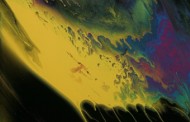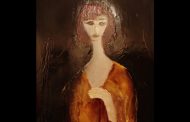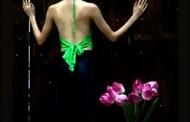 The Tokugawa shogunate of the Edo period gained undisputed control of the government in 1603 with a commitment to bring peace and economic and political stability to the country; in large measure it was successful. The shogunate survived until 1867, when it was forced to capitulate because of its failure to deal with pressure from Western nations to open the country to foreign trade. One of the dominant themes in the Edo period was the repressive policies of the shogunate and the attempts of artists to escape these strictures. The foremost of these was the closing of the country to foreigners and the accoutrements of their cultures, and the imposition of strict codes of behavior affecting every aspect of life, the clothes one wore, the person one married, and the activities one could or should not pursue.
The Tokugawa shogunate of the Edo period gained undisputed control of the government in 1603 with a commitment to bring peace and economic and political stability to the country; in large measure it was successful. The shogunate survived until 1867, when it was forced to capitulate because of its failure to deal with pressure from Western nations to open the country to foreign trade. One of the dominant themes in the Edo period was the repressive policies of the shogunate and the attempts of artists to escape these strictures. The foremost of these was the closing of the country to foreigners and the accoutrements of their cultures, and the imposition of strict codes of behavior affecting every aspect of life, the clothes one wore, the person one married, and the activities one could or should not pursue.
In the early years of the Edo period, however, the full impact of Tokugawa policies had not yet been felt, and some of Japan’s finest expressions in architecture and painting were produced: Katsura Palace in Kyoto and the paintings of Sotatsu, pioneer of the Rimpa school.
Painting
Sotatsu evolved a superb decorative style by re-creating themes from classical literature, using brilliantly colored figures and motifs from the natural world set against gold-leaf backgrounds. One of his finest works is the pair of screens The Waves at Matsushima in the Freer Gallery in Washington, D.C. A century later, Korin reworked Sotatsu’s style and created visually gorgeous works uniquely his own. Perhaps his finest are the screen paintings of red and white plum blossoms.
Woodblock Prints
The school of art best known in the West is that of the Ukiyo-e paintings and woodblock prints of the demimonde, the world of the kabuki theater and the brothel district. Ukiyo-e prints began to be produced in the late 17th century, but in 1764 Harunobu produced the first polychrome print. Print designers of the next generation, including Torii Kiyonaga and Utamaro, created elegant and sometimes insightful depictions of courtesans.
In the 19th century the dominant figure was Hiroshige, a creator of romantic and somewhat sentimental landscape prints. The odd angles and shapes through which Hiroshige often viewed landscape, and the work of Kiyonaga and Utamaro, with its emphasis on flat planes and strong linear outlines, had a profound impact on such Western artists as Edgar Degas and Vincent van Gogh.
Another school of painting contemporary with Ukiyo-e was Bunjinga, a style based on paintings executed by Chinese scholar-painters. Just as Ukiyo-e artists chose to depict figures from life outside the strictures of the Tokugawa shogunate, Bunjin artists turned to Chinese culture. The exemplars of this style are Ike Taiga, Yosa Buson, Tanomura Chikuden, and Yamamoto Baiitsu.
Hiroshige (1797-1858), Japanese painter and printmaker, known especially for his landscape prints. The last great figure of the Ukiyo-e, or popular, school of printmaking, he transmuted everyday landscapes into intimate, lyrical scenes that made him even more successful than his contemporary, Hokusai.
Ando Hiroshige was born in Edo (now Tokyo) and at first, like his father, was a fire warden. The prints of Hokusai are said to have first kindled in him the desire to become an artist, and he entered the studio of Utagawa Toyohiro, a renowned painter, as an apprentice. In 1812 Hiroshige took his teacher’s name (a sign of graduation), signing his work Utagawa Hiroshige. His career falls roughly into three periods. From 1811 to about 1830 he created prints of traditional subjects such as young women and actors. During the next 15 years he won fame as a landscape artist, reaching a peak of success and achievement in 1833 when his masterpiece, the print series Fifty-three Stations of the Tokaido (scenes on the highway connecting Edo and Kyoto), was published. He maintained this high level of craftmanship in other travel series, including Celebrated Places in Japan and Sixty-nine Stations on the Kiso Highway. The work he did during the third period, the last years of his life, is sometimes of lesser quality, as he appears to have hurriedly met the demands of popularity. He died of cholera on October 12, 1858, in Edo.
With Hokusai, Hiroshige dominated the popular art of Japan in the first half of the 19th century. His work was not as bold or innovative as that of the older master, but he captured, in a poetic, gentle way that all could understand, the ordinary person’s experience of the Japanese landscape as well as the varied moods of memorable places at different times. His total output was immense, some 5400 prints in all.
 Dyers’ Quarter, Kanda
Dyers’ Quarter, Kanda
1857 (110 Kb); From “One Hundred Famous Views of Edo”; Woodblock print, 13 1/4 x 8 5/8 in; The Brooklyn Museum
 Sanno Festival Procession at Kojimachi I-chome
Sanno Festival Procession at Kojimachi I-chome
1857 (130 Kb); From “One Hundred Famous Views of Edo”; Woodblock print, 13 1/4 x 8 5/8 in; The Brooklyn Museum
 Moon Pine, Ueno
Moon Pine, Ueno
1857 (130 Kb); From “One Hundred Famous Views of Edo”; Woodblock print, 13 1/4 x 8 5/8 in; The Brooklyn Museum
 Plum Estate, Kameido
Plum Estate, Kameido
1857 (150 Kb); From “One Hundred Famous Views of Edo”; Woodblock print, 13 1/4 x 8 5/8 in; The Brooklyn Museum
 Ushimachi, Takanawa
Ushimachi, Takanawa
1857 (130 Kb); From “One Hundred Famous Views of Edo”; Woodblock print, 13 1/4 x 8 5/8 in; The Brooklyn Museum










































